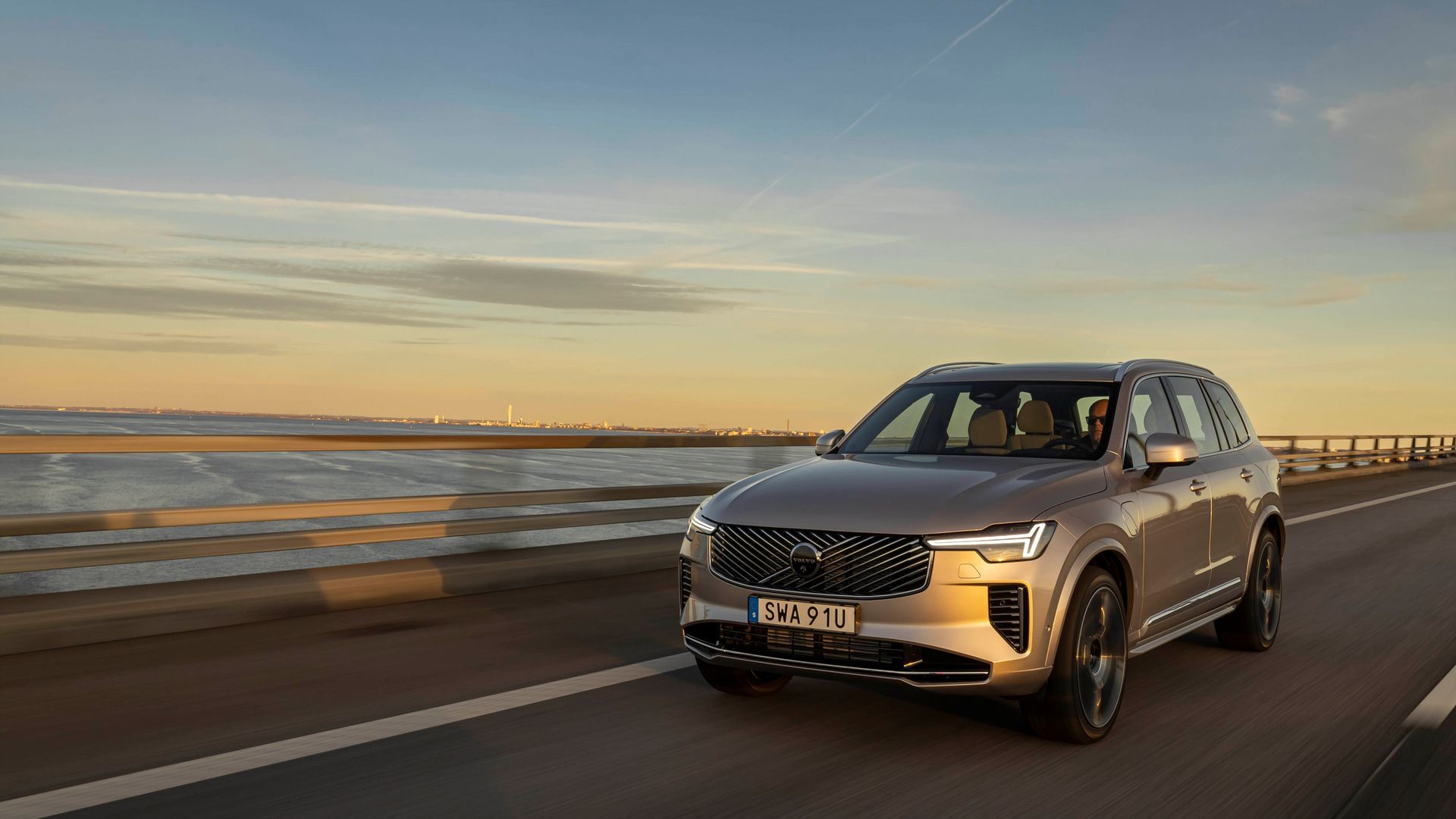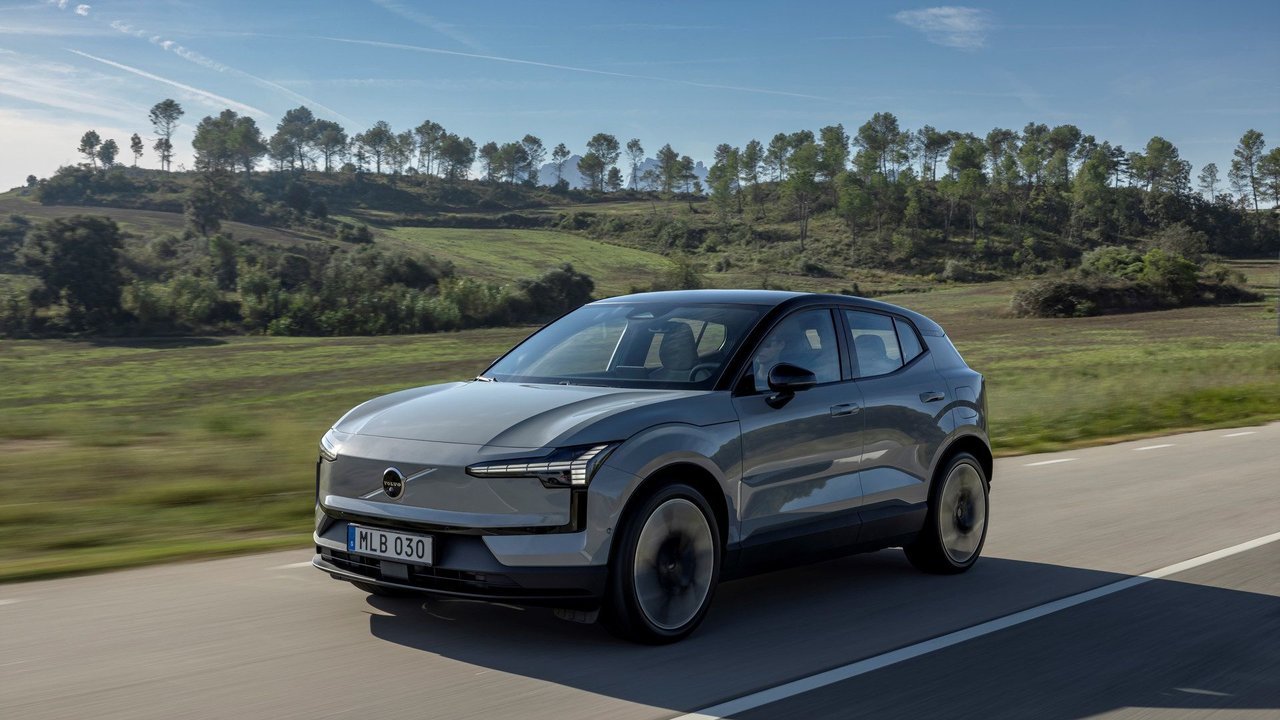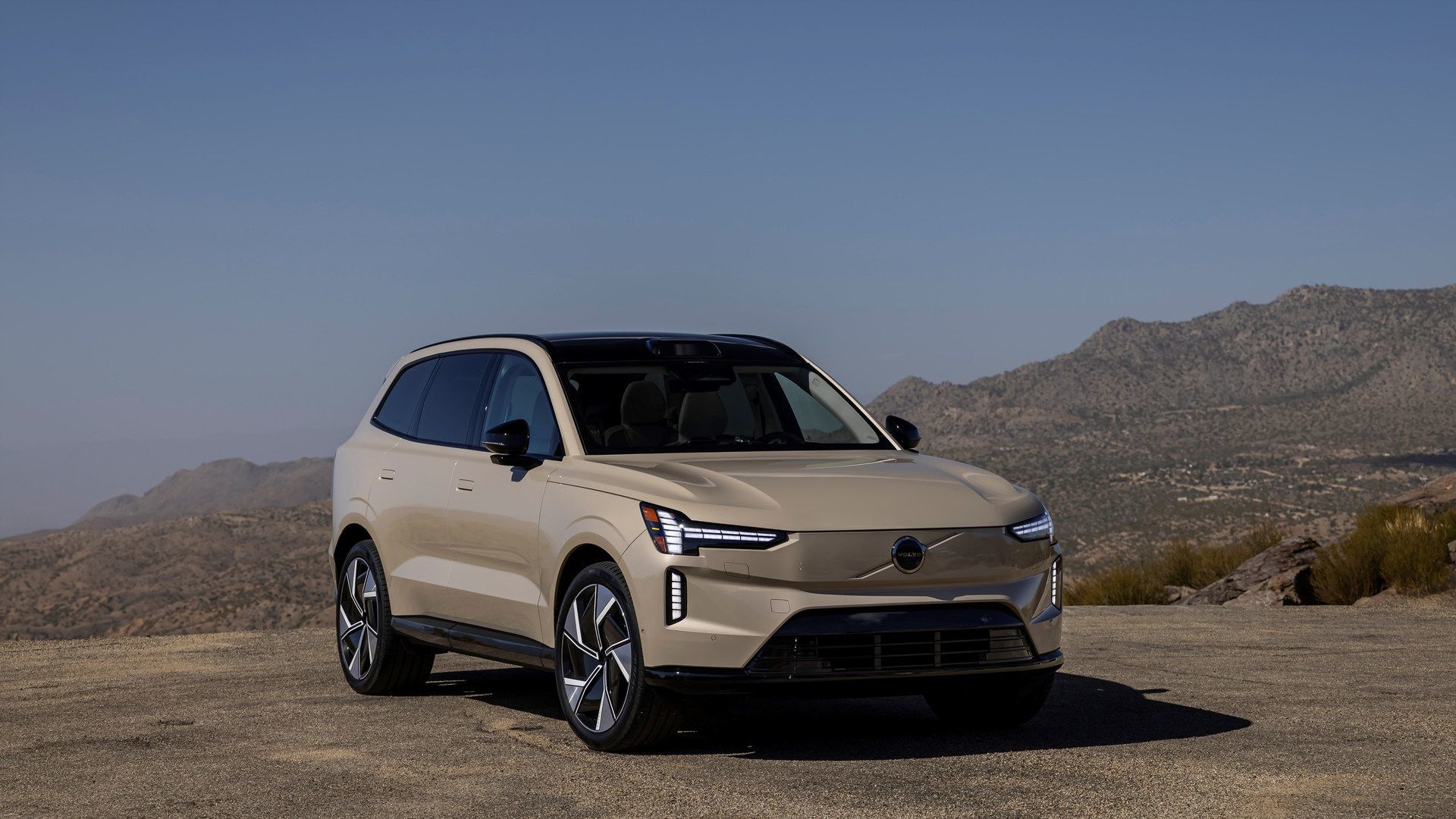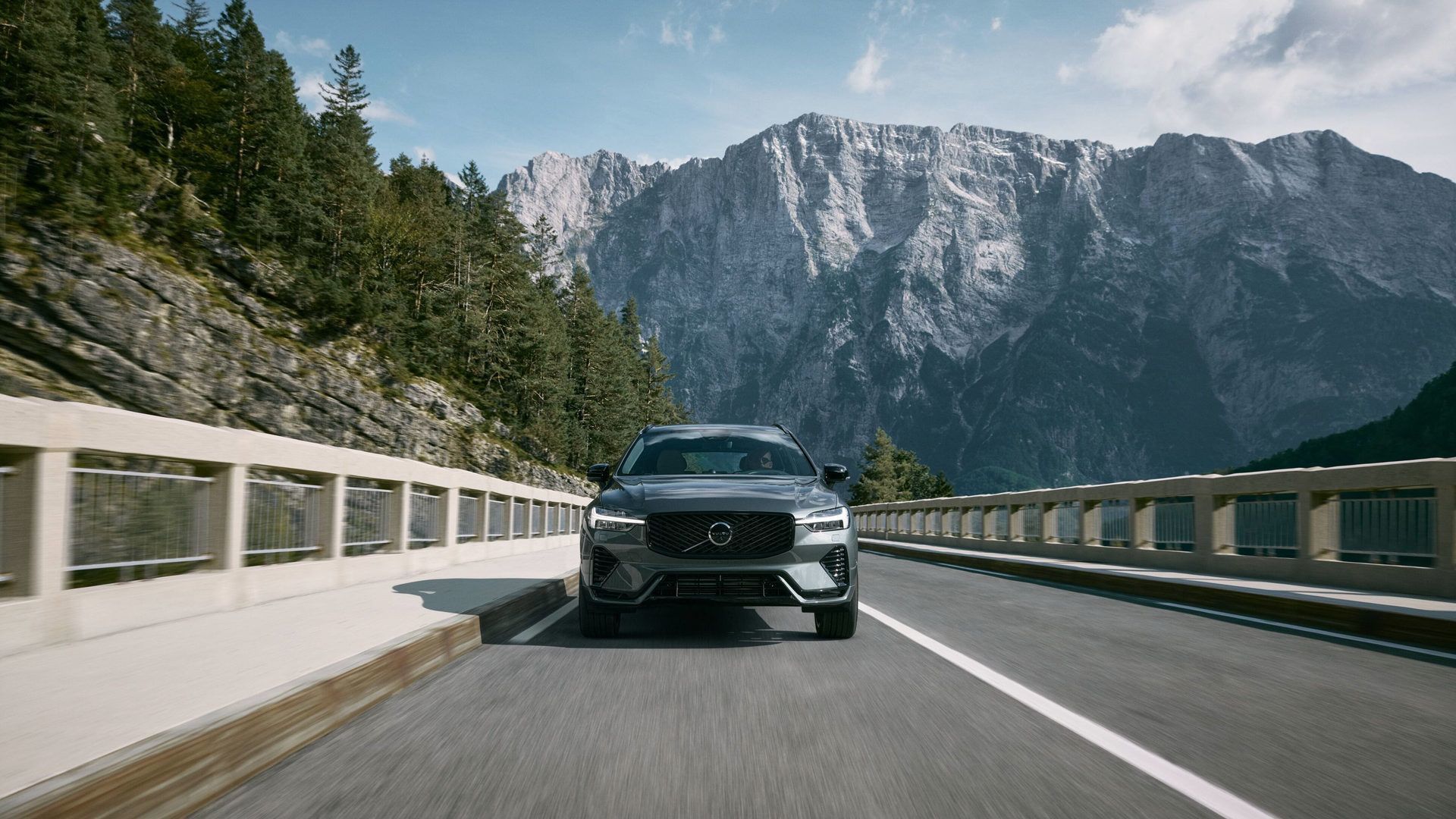
What Mississauga Drivers Should Know Before Buying a Plug-In Hybrid
Plug-in hybrid vehicles occupy a unique space in today's automotive landscape. They provide electric driving for your daily commute while...
Read moreVolvo Cars Mississauga

Electric vehicles have redefined performance expectations. Instant torque delivery, absent gear changes, and sophisticated traction management create acceleration characteristics that challenge conventional performance metrics. The Volvo EX30 Twin Motor Performance demonstrates these advantages in a compact format, delivering acceleration figures once reserved for exotic sports cars.
With 422 horsepower distributed through dual motors and all-wheel drive, the EX30 Twin Motor Performance accelerates from 0 to 100 km/h in 3.6 seconds. This performance positions the compact electric SUV alongside vehicles costing substantially more, while maintaining approximately 400 kilometres of range and practical daily usability across Mississauga and the Greater Toronto Area.
Dual-Motor Architecture and Power Distribution
The EX30 Twin Motor Performance uses two electric motors—one driving the front axle, producing 154 horsepower, and a larger rear motor generating 268 horsepower. Combined output reaches 422 horsepower with 400 lb-ft of torque available instantly from zero rpm.
This dual-motor configuration creates a through-the-road all-wheel-drive system. Unlike mechanical all-wheel-drive systems that use driveshafts and differentials to split power between axles, the EX30's motors operate independently, controlled by software that adjusts power distribution hundreds of times per second based on traction availability at each wheel.
When accelerating from a stop on dry pavement, both motors deliver maximum torque simultaneously. The system monitors individual wheel speeds, detecting any slip and instantly reducing power to that specific wheel while maintaining full power to wheels with grip. This electronic traction management responds faster than mechanical systems, maximizing acceleration while preventing wheelspin.
The rear-biased power distribution—with 63% of total output coming from the rear motor—creates a driving character distinct from front-heavy vehicles. During corner exit acceleration, the rear motor's stronger output rotates the vehicle naturally through curves, providing more engaging dynamics than front-wheel-drive configurations.
Understanding the 3.6-Second Acceleration Figure
The 0-100 km/h time of 3.6 seconds places the EX30 Twin Motor Performance in select company. To contextualize this performance, consider that many conventional sports sedans require 5-6 seconds for the same sprint. Even premium performance vehicles often need 4-5 seconds. The EX30 achieves this acceleration in a compact SUV format with ground clearance and cargo capacity designed for daily utility.
Electric motors produce peak torque immediately, without requiring engine rpm to build. When the accelerator is pressed, full torque arrives within milliseconds. Conventional engines must overcome internal friction, build pressure in turbochargers, and rev to their power band. This delay is absent in electric powertrains.
The single-speed transmission eliminates shift points that interrupt power delivery in conventional vehicles. During a 0-100 km/h run in a gasoline vehicle, the transmission typically shifts 2-3 times, briefly cutting power during each change. The EX30 delivers uninterrupted acceleration from standstill through the entire speed range.
Battery placement contributes to performance advantage. The 69 kWh battery sits low in the chassis, beneath the passenger compartment. This positioning lowers the center of gravity significantly compared to vehicles with elevated engine mass, improving traction during launch by keeping weight pressed firmly onto the drive wheels.
Battery Capacity and Range Considerations
The EX30 Twin Motor Performance uses a 69 kWh battery (65 kWh usable capacity), the same pack fitted to the less powerful Single Motor variant. The additional motor and increased power output affect range—the Twin Motor Performance achieves approximately 402 kilometres under EPA testing, compared to 414-420 kilometres for the Single Motor Extended Range model.
The range reduction results from several factors. The second motor adds weight—approximately 128 kilograms more than the Single Motor version—which increases energy required to accelerate and maintain speed. The more powerful motors also introduce slightly higher electrical resistance and heat generation, reducing overall efficiency.
Performance driving further impacts range. Frequent hard acceleration depletes the battery faster than moderate driving. However, for typical daily use in Mississauga—commuting from Meadowvale to Port Credit, running errands between Streetsville and Square One, or traveling Highway 403 to downtown Toronto—the 402-kilometre range provides substantial margin.
Regenerative braking helps extend range in urban driving. When lifting off the accelerator or applying brakes, the motors reverse function and act as generators, converting kinetic energy back into electricity stored in the battery. This energy recovery is most effective in stop-and-go traffic, where frequent deceleration provides continuous regeneration opportunities.
Charging Speed and Daily Usability
The EX30 supports DC fast charging at up to 153 kW peak power. At this rate, charging from 10% to 80% requires approximately 28 minutes. This charging speed suits longer trips where stops align with charging sessions—breaks for meals or rest naturally accommodate the charge time needed to continue travel.
For daily Mississauga driving, home charging typically provides sufficient energy replenishment. Using a Level 2 home charger at 32 amps, the battery charges fully in approximately 11 hours—easily accomplished overnight. Even a standard 120-volt household outlet, while slower at 39 hours for a complete charge, can replenish 50-60 kilometres of range overnight, sufficient for many daily driving patterns.
Public charging infrastructure continues expanding across Mississauga and the Greater Toronto Area. Level 2 chargers at shopping centers like Square One, Heartland Town Centre, and various municipal lots provide convenient top-up opportunities during routine stops. DC fast chargers along Highway 401 and major corridors support longer-distance travel.
Chassis Tuning and Handling Characteristics
The EX30's compact dimensions—4,233 mm length and 2,650 mm wheelbase—create nimble handling in urban environments. The short wheelbase allows tight turning radius of 10.7 metres curb-to-curb, beneficial when navigating crowded parking structures or making U-turns on residential streets.
The suspension uses MacPherson struts at the front and a five-link independent rear setup. This configuration provides good balance between ride comfort and handling control. The suspension absorbs impacts from Mississauga's varied road surfaces while maintaining body control during cornering.
Ground clearance measures 177 mm—higher than sedans but lower than many SUVs. This height provides adequate clearance for speed bumps, parking curbs, and winter snow accumulation while keeping the center of gravity lower for improved handling stability.
The low-mounted battery creates a center of gravity approximately 200 mm lower than equivalent gasoline SUVs. This dramatically reduces body roll during cornering and improves stability during emergency maneuvers or sudden direction changes. The weight distribution approaches 50/50 front-to-rear, providing balanced handling characteristics.
Electric power steering adjusts effort based on vehicle speed. At parking lot speeds, effort is light for easy maneuvering. As speed increases, resistance builds, providing greater stability and reducing sensitivity that could lead to over-correction at highway speeds.
Interior Space and Cargo Capacity
Despite its compact exterior dimensions, the EX30 provides practical interior space. Front passengers receive 1,063 mm of legroom and 1,058 mm of maximum headroom with the panoramic roof. The minimalist dashboard design eliminates a traditional instrument cluster, creating an open, spacious feel.
Rear passengers get 821 mm of legroom—adequate for adults on shorter trips, though longer journeys may prove less comfortable for taller individuals. Headroom measures 974 mm in the rear, sufficient for most passengers.
Cargo capacity reaches 400 litres behind the rear seats, expanding to 1,000 litres with seats folded. The flat load floor simplifies loading longer items. A small frunk (front trunk) adds 7 litres of secure storage for charging cables or valuable items that shouldn't be visible through the rear cargo area.
The rear seats fold in a 60/40 split, allowing long items like skis or lumber to pass through while maintaining one rear seating position. The cargo floor sits 733 mm from the ground—low enough for easier loading compared to taller SUVs.
Technology Integration and User Interface
The EX30's interior is dominated by a 12.3-inch center touchscreen that controls nearly all vehicle functions. This design eliminates most physical buttons in favor of touch controls and voice commands through Google Assistant.
Google built-in provides native integration of Google Maps, Google Assistant, and Google Play. Navigation, music streaming, and other apps run directly on the vehicle's system without requiring phone connection, though Apple CarPlay and Android Auto remain available.
The lack of a traditional instrument cluster represents a significant design choice. Speed, battery level, and other critical information display on the center screen, requiring the driver to glance right rather than straight ahead. This approach may require adjustment for drivers accustomed to traditional gauge placement.
Voice control through Google Assistant allows hands-free operation of many functions. Commands for navigation, climate adjustment, or entertainment selection can be issued in natural language without precise phrasing requirements.
Comparing Performance Electric Vehicles
|
Vehicle |
Power (hp) |
0-100 km/h (sec) |
Range (km) |
Starting Price Range |
|---|---|---|---|---|
|
Volvo EX30 Twin Motor Performance |
422 |
3.6 |
402 |
Mid-$50,000s |
|
Tesla Model Y Performance |
456 |
3.5 |
514 |
Low $70,000s |
|
Ford Mustang Mach-E GT |
480 |
3.8 |
402 |
High $60,000s |
|
Hyundai Ioniq 5 N |
641 |
3.4 |
354 |
High $60,000s |
Real-World Performance Scenarios
The EX30 Twin Motor Performance's acceleration provides practical benefits beyond straight-line speed. Highway on-ramp merging becomes effortless—the instant torque allows confident entry into traffic flow regardless of existing speed. Passing slower vehicles on two-lane roads occurs quickly and safely, minimizing time in the oncoming lane.
In urban environments around Mississauga, the performance allows quick acceleration from stoplights to maintain traffic flow. The immediate throttle response eliminates hesitation when pulling into traffic or navigating busy intersections.
The electronically limited top speed of 180 km/h provides adequate performance for Canadian highways while optimizing efficiency and extending range. Higher speeds exponentially increase aerodynamic drag, rapidly depleting battery charge—the speed limiter protects practical range while allowing comfortable highway cruising.
Winter Performance Considerations
Ontario winters present specific challenges for electric vehicles. Cold temperatures reduce battery capacity and range. At -20°C, the EX30's range may decrease by 30-40% compared to moderate temperatures, dropping from 402 km to approximately 240-280 km under extreme conditions.
Battery thermal management helps mitigate cold-weather impacts. The system heats the battery to maintain optimal operating temperature, though this heating draws energy that would otherwise power the vehicle. Pre-conditioning the cabin while connected to shore power—heating the interior before departure while still plugged in—preserves battery range for driving.
The all-wheel-drive configuration provides significant traction advantages in snow and ice. The instant torque delivery and electronic traction control respond faster than conventional systems, maximizing available grip during acceleration on slippery surfaces.
Winter tires remain essential regardless of all-wheel-drive capability. All-wheel drive improves acceleration traction but doesn't enhance braking or cornering grip—only proper winter tires provide those benefits. The EX30's tire size accommodates common winter tire options available from Canadian tire retailers.
Cost of Ownership and Efficiency
Electric vehicles typically offer lower operating costs than gasoline equivalents. Ontario electricity rates average approximately $0.074 per kWh during off-peak hours. Charging the EX30's 65 kWh usable battery capacity from empty to full costs approximately $4.81, providing 402 km of range—about $1.20 per 100 kilometres.
A comparable gasoline vehicle averaging 9.0 L/100 km costs approximately $15.30 per 100 kilometres at current fuel prices near $1.70 per litre. Over 20,000 kilometres annually, the EX30's electricity costs reach approximately $240 compared to $3,060 for gasoline—a difference of $2,820 annually.
Maintenance requirements decrease in electric vehicles. No oil changes, spark plugs, timing belts, transmission fluid, or exhaust system maintenance. Brake wear reduces due to regenerative braking handling most deceleration. Primary maintenance involves tire rotation, cabin air filter replacement, and brake fluid changes at extended intervals.
Insurance costs vary based on individual driver factors, but electric vehicles sometimes incur slightly higher premiums due to potentially expensive battery replacement costs and specialized repair requirements. However, some insurers offer discounts for electric vehicle owners.
Experience the EX30 Twin Motor Performance at Volvo Cars Mississauga
The Volvo EX30 Twin Motor Performance delivers 3.6-second acceleration to 100 km/h through 422 horsepower and dual-motor all-wheel drive, packaged in a compact electric SUV format. For Mississauga drivers seeking performance that rivals sports cars while maintaining daily practicality, the EX30 Twin Motor Performance offers a compelling combination.
Visit our team at Volvo Cars Mississauga to experience how the EX30 Twin Motor Performance's instant acceleration and electric efficiency suit your driving style across Mississauga and the Greater Toronto Area.

What Mississauga Drivers Should Know Before Buying a Plug-In Hybrid
Plug-in hybrid vehicles occupy a unique space in today's automotive landscape. They provide electric driving for your daily commute while...
Read more
2025 Volvo EX90: Understanding Trim Levels and Features
Volvo's flagship electric SUV arrives with two distinct trim configurations. The 2025 EX90 Twin Motor Plus establishes the baseline equipment...
Read more
5 Safety Features That Make 2026 Volvo SUVs Stand Out in Ontario
Safety has been Volvo's calling card since the company invented the three-point seatbelt in 1959 and made the patent freely available to the entire...
Read more